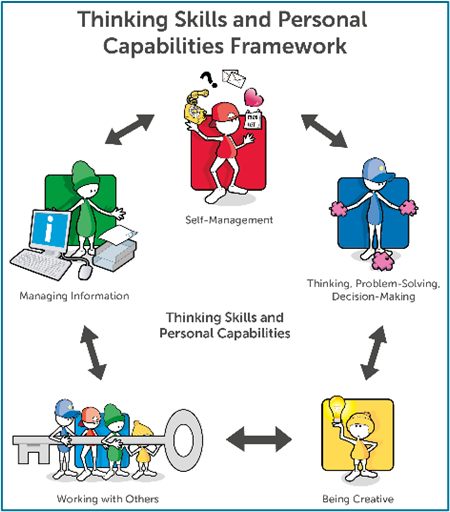Part 2: Metacognition: "It's Just a Mind Map"
The Ups and Downs (and everything in between) of whole school implementation
Embedding cultural change in a large secondary school comes with challenges. In this sequence of short blogs, Assistant Head Teacher Ruth Thornton shares the steps Wildern School have taken to build a long-lasting commitment to the development metacognition and self-regulation.
By Ruth Thornton
Our Journey continues: Implementing a Metacognitive Culture
We were armed and ready. Our development group had spent the entire year trialling and evaluating the Thinking Matters ‘Thinking Frames‘. Excitement buzzed through the team as we prepared for the first phase of implementation with our middle leaders. The anticipation was palpable—this was our chance to make a real difference.
Accompanying this blog series are a selection of ‘walkthru’ classroom case-studies, provided by the team at Wildern School.
Click here to visit the Members Dashboard
I’ve always believed middle leaders hold the most fundamental role in any school. They are the bridge between the vision (the intent) and the classroom, and their support can make or break an initiative.
At our school, we have a curriculum development group (CDG) made up of the subject leaders across our school. Launching the Thinking Frames and how we planned to use them across our school with our subject leaders was going to be fundamental to achieving our intended outcomes. It was important for us that our launch was driven by our development group (a cross section of staff from across our school) as they were the ones whose voices would be the most authentic having used the Frames in their classrooms and seen the benefits already.
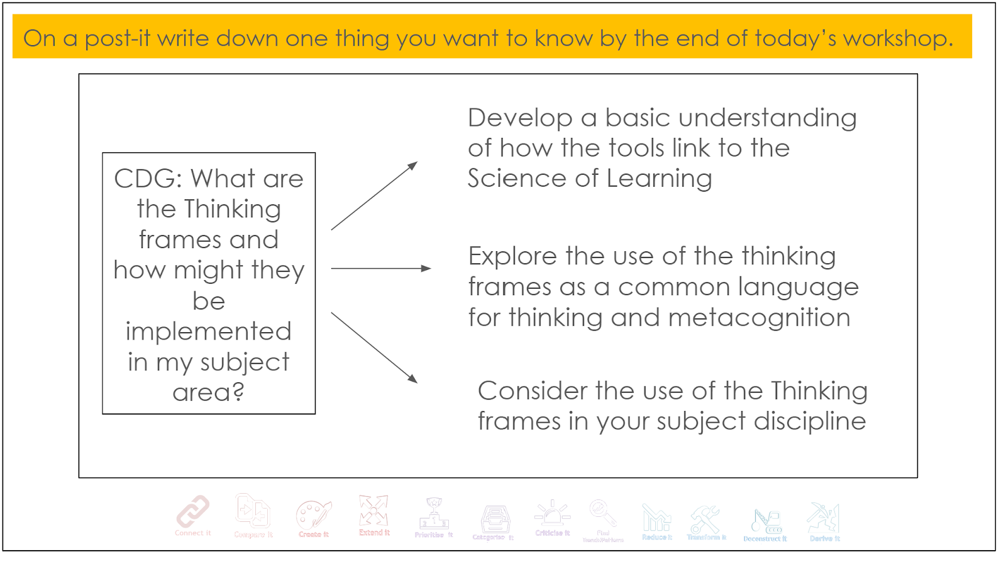

Then came the feedback...
Out of our 34 middle leaders, the one comment, or perhaps bright alarm, that rang out was this:
“It’s just a mind map.”
Why do we always focus on the one voice that has something negative to say? Leading change is hard. Standing in front of a room full of excellent practitioners and leaders, all experts in their own subjects, while passionately advocating for something you truly believe in, is like laying your soul bare. You’ll never win over everyone. Change is challenging, and it takes time.
I had to pause and reflect: Had I effectively communicated the vision? Was I clear enough about the rationale behind this initiative? Were our staff ready for this?
It reminded me of those moments when you leave a lesson feeling like the superhero of teaching, only to crash down in the next session when students stare at you blankly, as if you’re speaking a foreign language. We’ve all experienced those times when our classrooms seem like black holes, absorbing all our efforts. You confidently introduce a retrieval starter for the next lesson, only for a student at the front to say, “We’ve never done this before, Miss,” their words echoing around the room while their expressions suggest you might as well be from another planet!
Learning is hard. Learning takes time. Implementation is no different.
We regrouped, reread the feedback, and reminded ourselves to listen to the 25 other voices that were far more supportive. What is it about human nature that causes us to focus on the negative?
We returned to our development group’s rationale, reviewed the research, and looked again at the examples we had of students’ work and the impact the Thinking Frames were having in the classrooms we had trialled them in. I had to dial down my initial, irrational response to that one piece of negative feedback from our middle leaders. On the whole, the feedback from the group was very positive. We’re fortunate to work in a school with a staff that is open-minded and willing to try new things.
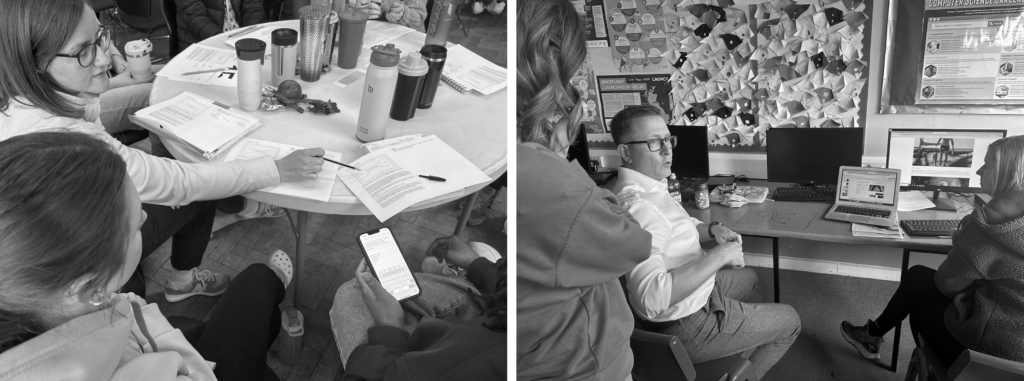
Benefits of Thinking Frames
TSN Members: for worked examples provided by Wildern School, visit the Members Dashboard.
Here are some of the benefits we have discovered about using the Thinking Frames on our journey so far:

- Structured and visible Thinking: The Frames provide a structured approach to critical thinking, helping students organise their thoughts more effectively and manage their learning. They also make thinking processes visible, reducing cognitive overload..
- Enhanced Creativity: Students are encouraged to explore ideas beyond the surface, fostering creativity and deeper understanding. We’ve found that the visual and interactive nature of the Frames also increases student engagement and participation in lessons, making them more active and less passive. This aligns with our school’s priority to promote active learning.
- Improved Engagement: The visual and interactive nature of the Frames increases student engagement and participation in lessons.
- Adaptable and versatile: These tools can be applied across various subjects, making them versatile and adaptable to different learning contexts. The Frames are easy to scaffold, catering to diverse learning needs.
- Student Empowerment: By using Thinking Frames, students take ownership of their learning, becoming more independent and confident thinkers.
- Promotes Agency: The Frames promote agency encourage self direction, exploration and decision making, enabling students to become independent thinkers who can analyse and synthesise information effectively.
- Builds Student Confidence: By using Thinking Frames, students gain confidence in their abilities as they see their thoughts organised and validated through structured activities.
- Enhances Responsive Teaching: The Frames allow teachers to gather evidence of student understanding, enabling responsive teaching. Visible thinking holds students accountable for their engagement, preventing them from opting out.
We’ve seen highly effective student examples showcasing the power of these Thinking Frames to help visualise important steps in thinking:
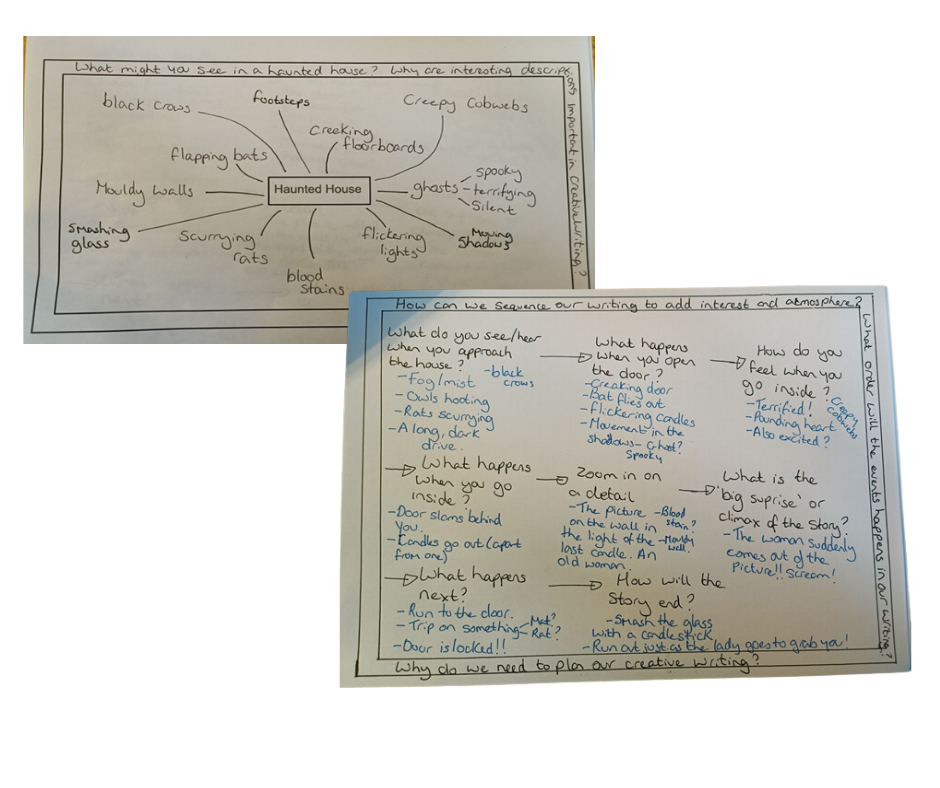
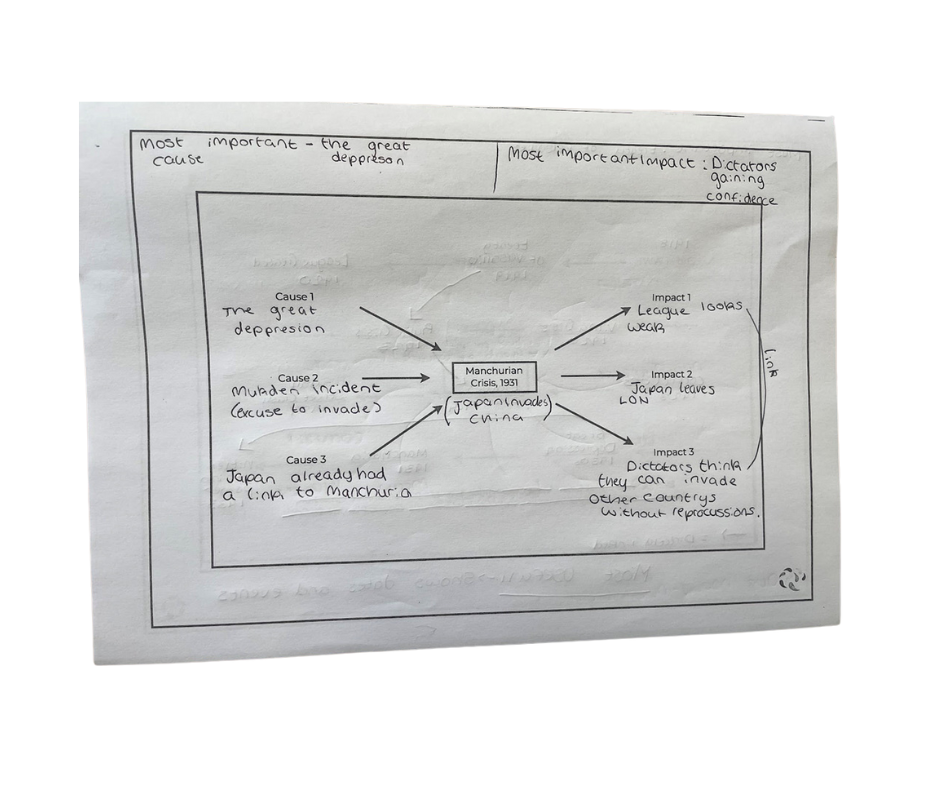
When in doubt, as a leader, sometimes you just have to walk down the corridor and find the positives. On one such walk, I was surprised and delighted to see the subject leader, who had previously dismissed the frames as “just a mind map,” using them in their classroom. Maybe there’s more to this approach than I originally thought.



